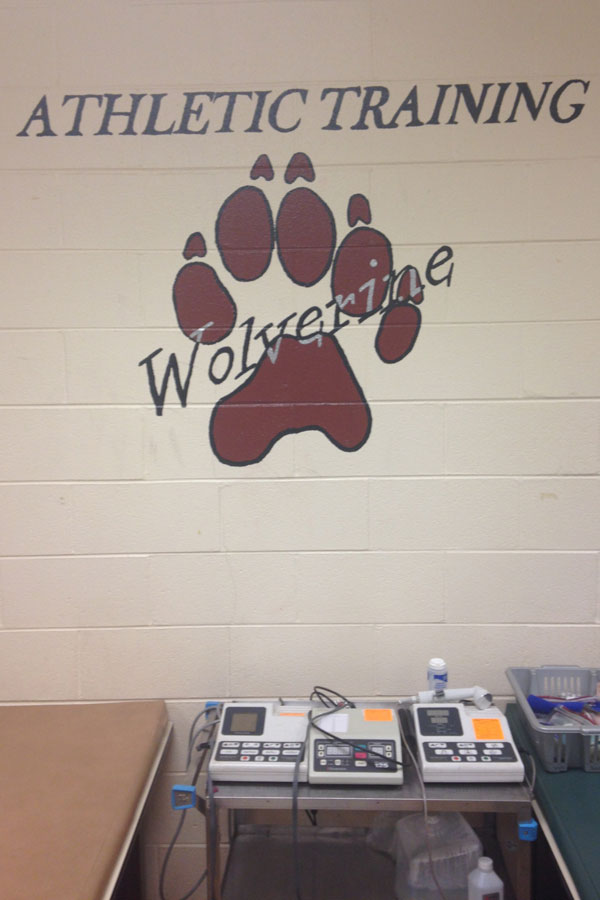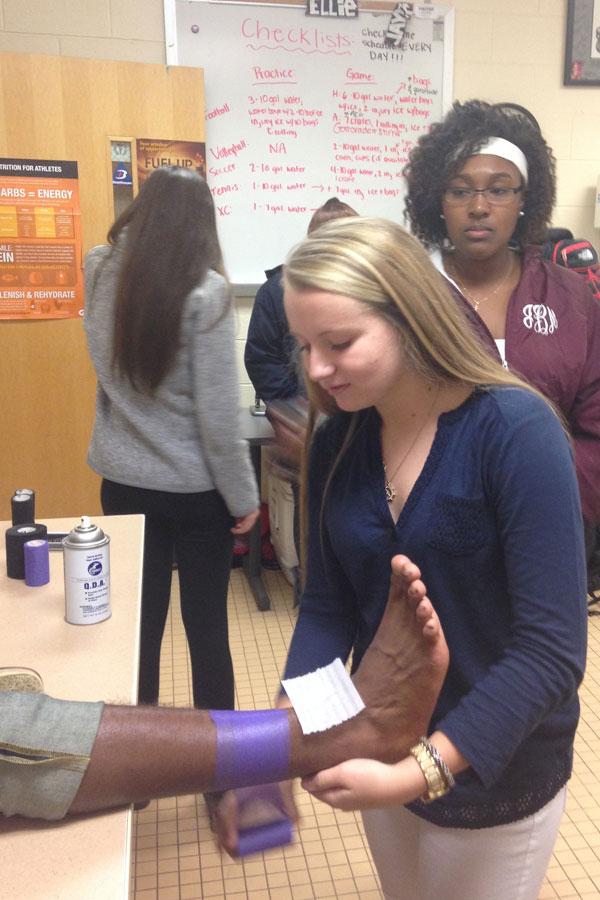Wakefield adopts new tactics to insure player safety
Wakefield trainers hard at work keeping athletes on the field and the court.
November 7, 2014
High school sports give student athletes a chance to compete against different schools and help develop life skills. However, student athletes commit to a team with the risk of getting injured. The Heads Up Tackling program was adopted last year, but was revised this past summer. Our athletics program adheres to programs like these to insure the safety of our students.
Sports injuries have become a common problem in high school for athletes. According to Stop Sport Injuries, an organization to help build awareness about sports injuries, over two million athletes a year are injured. Most injuries are received in sports with contact.
“Football, soccer and even basketball run a higher risk of receiving an injury,” said Laurie King, certified athletic trainer and strength and conditioning specialist for the Wakefield physical training staff.
When joining these sports, athletes have to sign waivers in order to play making them aware that they do run the risk of injury.
“I’ve had a couple shoulder injuries and a concussion,” said Jules Drew, senior. “I understand the risk I take before committing to the sport.”
Athletes work their hardest to avoid injury but it’s not always their fault. Sometimes playing surface can have a serious effect on injuries.
According to Dr. Jay H. Williams, from the Depa

The Wakefield training room is clearly Wolverine territory.
rtment of Human Nutrition , turf fields are not as safe as grass fields.
“Turf fields grab cleats tighter and have less give when you plant your feet,” said King. “If your feet are moving and giving with the ground then the joints take the brunt of the force. This is causing more ACL injuries and ankle sprains.”
Some athletes feel differently about playing on turf fields.
“I like grass field a lot better than turf,” said Santiago Zapata, senior soccer player. “They don’t get as hot in the summer and athletes prefer good grass to turf.”
Some schools in the area have adopted turf field but a majority and still natural grass. This creates a problem for coaches that prefer the grass field but the game still has to be played.
“Our best surface that we can play on by far is grass,” said Rodney Sink, head football coach, “We have to play on the surface we are provided with and I don’t think Wake County is leaning towards turf.”
Another problem athletes are experiencing is concussions. According to the National Athletic Training Association three hundred thousand traumatic brain injuries happen each year due to high school sports.
Wakefield is taking steps in the right direction to prevent future risks of concussions. The Head Up Tackling program was adopted by Wakefield last year and is giving football coaches new techniques to teach their players during high risk tasks.
“We were first notified about the Heads Up Tackling program at the Collision Clinique in Washington, D.C. that we attended last spring,” said Sink. “That is what interested me. Anything we can do to provide safety for our players whether it’s a new technique or idea I’m interested. It gives us a better opportunity to protect our players.”
After Wakefield adopted it, other schools started to join in. The process athletes go through to learn these new techniques changes the way coaches run drills.
“It includes a series of six drills to go through and practice,” said Sink. “Not only has drill technique changed, but also the words we used to teach tackling have. We no long say ‘rap up’ but we now say ‘upper cut.”
Coach Sink along with the other experts thinks these changes will help prevent future injuries.









